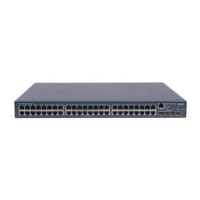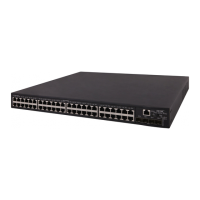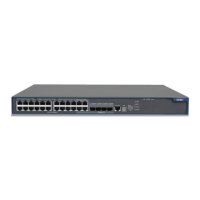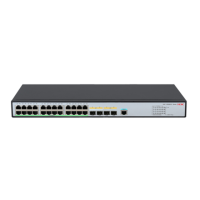1-7
0000: 0D 0A 23 0D 0A 20 76 65 72 73 69 6F 6E 20 35 2E ..#.. version 5.
0010: 32 30 2C 20 41 6C 70 68 61 20 31 30 31 31 0D 0A 20, Alpha 1011..
0020: 23 0D 0A 20 73 79 73 6E 61 6D 65 20 48 33 43 0D #.. sysname H3C.
0030: 0A 23 0D 0A 20 70 61 73 73 77 6F 72 64 2D 63 6F .#.. password-co
...Omitted...
execute
Syntax
execute filename
View
System view
Default Level
2: System level
Parameters
filename: Name of a batch file with a .bat extension. You can use the rename command to change the
suffix of the configuration file to .bat to use it as a batch file.
Description
Use the execute command to execute the specified batch file.
Batch files are command line files. Executing a batch file is to execute a set of command lines in the file.
z You should not include invisible characters in a batch file. If an invisible character is found during
the execution, the batch process will abort and the commands that have been executed cannot be
cancelled.
z Not every command in a batch file is sure to be executed. For example, if a certain command is not
correctly configured, the system omits this command and goes to the next one.
z Each configuration command in a batch file must be a standard configuration command, meaning
that the valid configuration information can be displayed with the display current-configuration
command after this command is configured successfully; otherwise, this command may not be
executed correctly.
Examples
# Execute the batch file test.bat in the root directory.
<Sysname> system-view
[Sysname] execute test.bat
file prompt
Syntax
file prompt { alert | quiet }
View
System view

